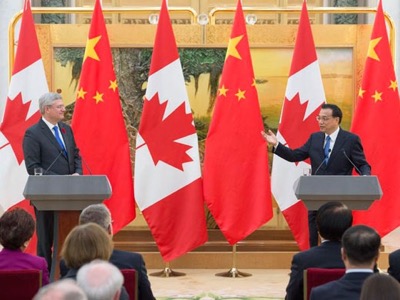Canada: China’s «Trojan horse»
The number of adepts of the Chinese currency is ever-growing in its process of internationalisation. After gaining support in Pacific Asia and Europe by installing clearing centres and permit the investment of financial assets denominated in yuan, now Canada, the United States’ long-time ally, breaks its resistance and is called upon to become the platform of «yuan-ization» on the American continent.by Ariel Noyola Rodríguez
Thirza ToesSource
Russia Today (Russia)
Sunday, May 24, 2015
Canada: China’s «Trojan horse»
Subscribe to:
Post Comments (Atom)

No comments:
Post a Comment